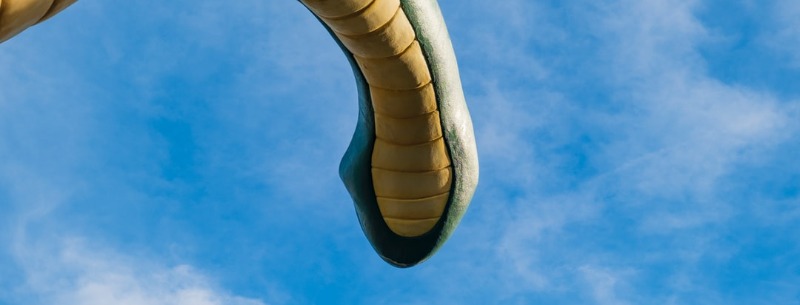Nothing beats a good road trip and the discoveries we make along the way. The odder the roadside attractions are, the better. Some of them are plain weird and downright tacky, others are genius and imaginative inventions and real works of art. Some convey a serious message and others provoke us to shake our heads.
I call them roadside treasures; others think they are nothing more than tourist traps. Either way, I am glad they are there. Driving long distances can be quite tiresome, especially with kids in the car. These roadside attractions always give us an opportunity to stop and – at least – stretch our legs and maybe wonder, who on earth came up with such outrageous ideas to build the world’s largest and oddest things.

Proof that I am not alone with my love for the wacky and tacky along the road is the collection of stamps by Canada Post, depicting Canadian Roadside Attractions. Some of these sites are free, others charge a small fee and some are on private grounds, put there by the artist or a collector. If that’s the case, please be considered and ask for permission to take a closer look.
Enjoy your road trip, be safe and have fun! And please do share your quirky discoveries with us!
Worlds Largest Dinosaur
Drumheller’s Tyrannosaurus
Drumheller, self-proclaimed Canadian Dinosaur Capital boosts the Worlds largest dinosaur. And they have all the reasons to do so. Drumheller is the starting point for the Dinosaur Trail in the Canadian Badlands and home to the Tyrrell Museum of Palaeontology.
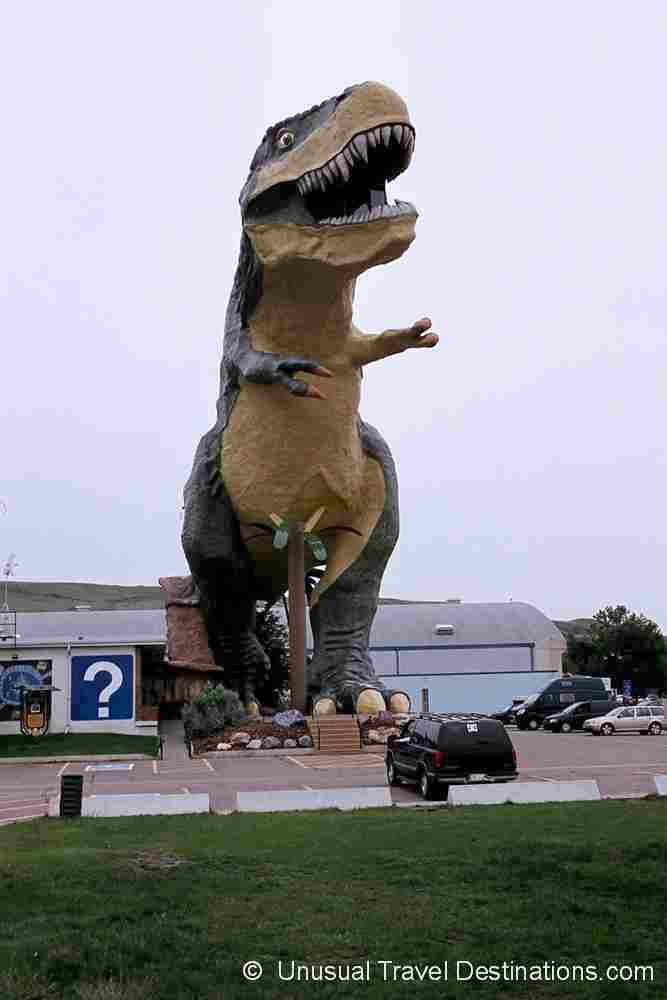
The impressive 25-meter (82 ft) high Tyrannosaurus rex sits right next to the tourist office. If so inclined, one can climb up to its mouth, a viewing area that can hold up to 12 people at the time. The giant is about four times larger than a real life-size Tyrannosaurus.
Drumheller Visitor Information Centre
Box 999, 60 – 1 Avenue West
Drumheller, Alberta, Canada, T0J 0Y0
Phone: (Toll-free) 1.866.823.8100
- 136 km (84,5 mi) Calgary – Drumheller
- 278 km (173 mi) Edmonton – Drumheller
- 174 km (108 mi) Dinosaur Provincial Park – Drumheller
Celebrating Big Things
Star Trek Memorabilia Mania
Canadians have a knack to invent wacky things to grab a traveler’s attention. Who would have thought of finding Star Trek memorabilia in the rural community of Vulcan Alberta? When Mr. Spock and the Star Trek TV Series became a success, the Town of Vulcan got slightly obsessed with all things space tourism.
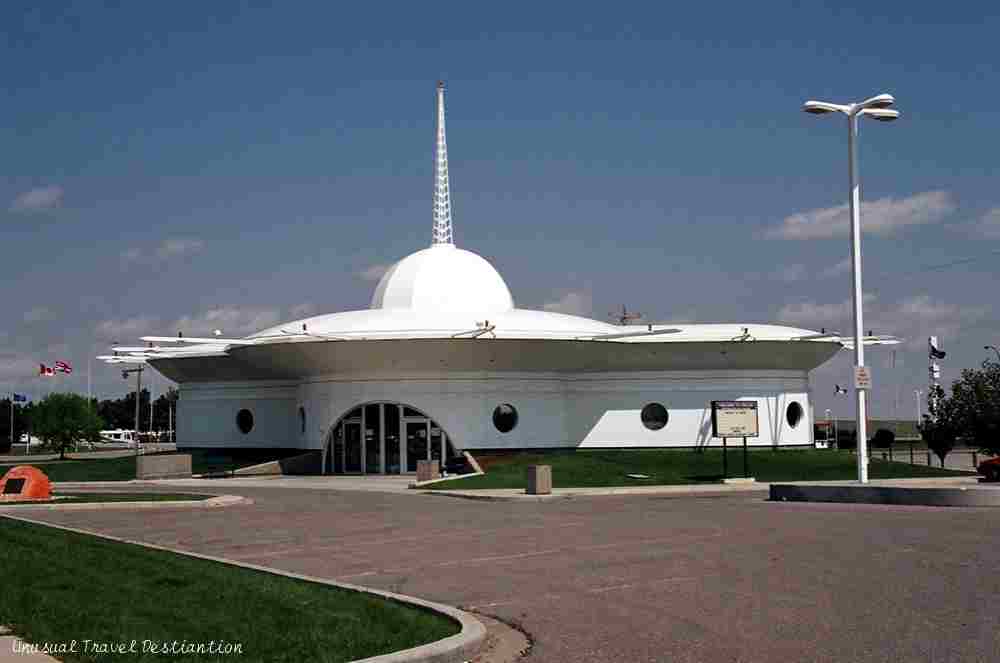
Vulcan Alberta got its name when Vulcan the planet was not yet known. Over 100 years ago, the Canadian Pacific Railway Corporation christened the town after the Roman God of fire and metalworking. Rumour has it, that opponents of the Vulcan sports team would mock the size of their ears. Which, in turn, gave the Vulcan’s the idea to cash in on space tourism.
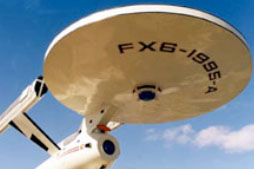 At the entrance of the town, a replica of the Starship Enterprise is greeting visitors. Vulcan has become somewhat of a Trekkies pilgrimage site. The first Star Trek convention was celebrated 17 years ago. I missed the Galaxyfest and Spock Days by one week. Every year in June, Trekkies and other intergalactic visitors with pointy ears invade the official trek capital of Canada by the busload to participate in the extra-terrestrial fun.
At the entrance of the town, a replica of the Starship Enterprise is greeting visitors. Vulcan has become somewhat of a Trekkies pilgrimage site. The first Star Trek convention was celebrated 17 years ago. I missed the Galaxyfest and Spock Days by one week. Every year in June, Trekkies and other intergalactic visitors with pointy ears invade the official trek capital of Canada by the busload to participate in the extra-terrestrial fun.
The people of Vulcan sure are a business-savvy bunch. From the bakery to the liquor store, from retailers to the Vulcan Trek Station, all offer Spock-themed products. The futuristic Space Adventure Centre is the Tourist Office of the town and filled with exhibits and Star Trek memorabilia to the brim.
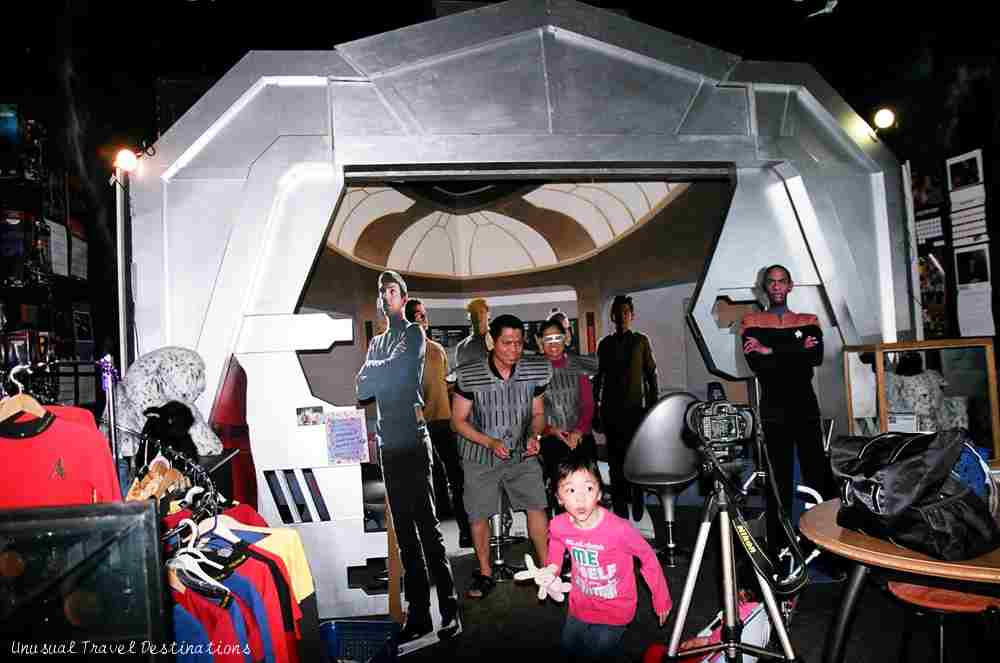
Visitors can become extraterrestrial beings for the duration of the visit and dress up in Star Fleet Uniforms, stick their faces through a cardboard cut-out, play a Virtual Reality Game and buy souvenirs in the Galaxy Gift Shop, heaven for hard-core Trekkies.
Good to Know
- Galaxyfest, Star Trek Convention: 2nd Weekend in June
- The population of Vulcan: Approx. 2000
- Official Language: English, not Klingon
Directions
- From Calgary: Take Highway 2 South to High River, and then Highway 23 East and South to Vulcan
- From Lethbridge: Take Highway 3 North to Monarch, and then rural Highway 23 North to Vulcan
- From Fort MacLeod: Take Highway 3 East to Monarch, and then rural Highway 23 North to Vulcan
Biggest Truck in the World
It was a rainy day in September 2008 when we drove through Sparwood, British Columbia. We had just visited Glacier National Park in Montana and Waterton Lakes National Park in Alberta, Canada and were heading home.
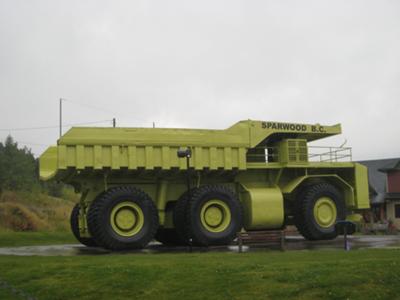
Sparwood is a small town with just over 4,000 people, but it has a very big feature. The attraction is “The Terex Titan”, which is touted as being “The biggest truck in the world!”
We just happened upon the truck when we got off of the highway to get gasoline in Sparwood, BC. It would be hard to miss this huge truck. Just think of this fact: The Titan can hold two buses and two pickups!
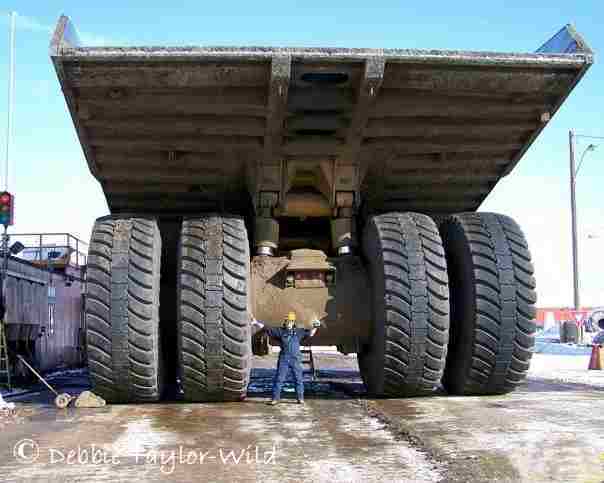
The Titan was built in 1974 and put on display at a mining convention in Las Vegas. After being used for my work in California, it was moved to Sparwood in 1978 and put to work moving earth in the nearby open-pit mine. Now it is on display outside of the Sparwood Visitor Centre just off of Highway 3.
Le Chevalier EPI de La Combe
A Scrap Metal Sculpture on Geneva’s posh Quai du Mont Blanc
A stroll along Geneva’s lakefront is always a pleasure. The splendid backdrop of the snow-covered Mont Blanc mountain range is awe-inspiring enough.
But there are many attractions along the Quai du Mont-Blanc, from the Ile de Rousseau all the way up to the Botanical Gardens. Heritage buildings line the street on one side and the sparkling Lac Leman with its Jet d’Eau the other side while sculptures, monuments, and colorful flowerbeds beautify the space in-between.
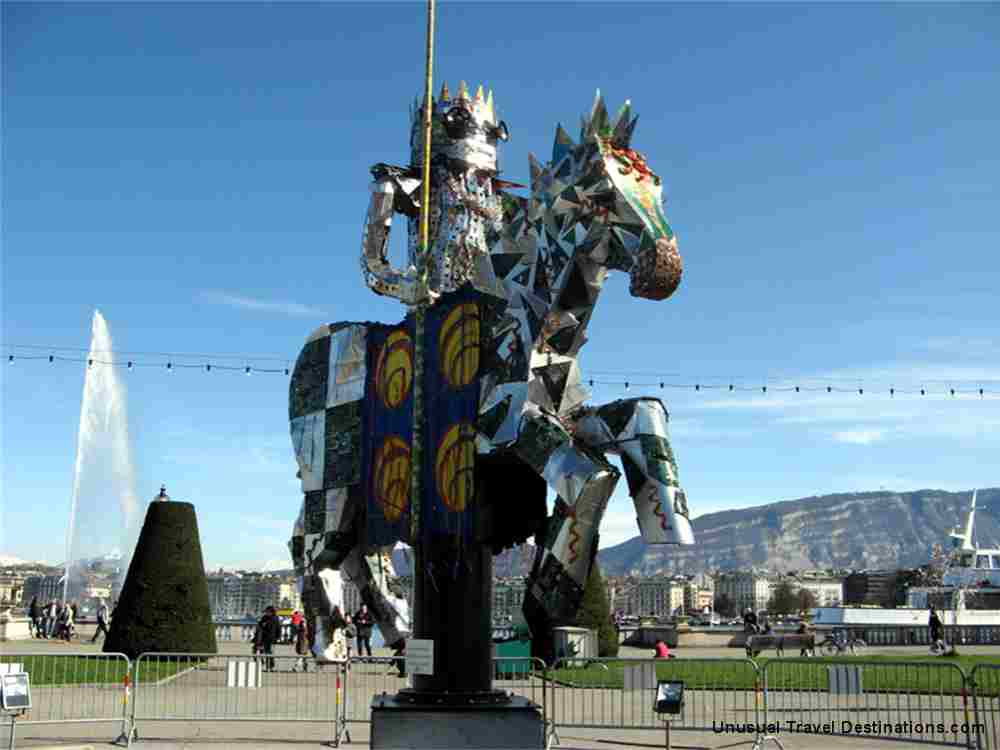
What caught my eye last time I visited was a scrap metal sculpture, the Chevalier EPI de la Combe on the Rotonde du Mont-Blanc. The colorful installation is made of recycled material and prominently positioned with the Jet d’Eau, Geneva’s landmark, in the background. The giant rider makes quite an impression with its height of 4.5 meters.
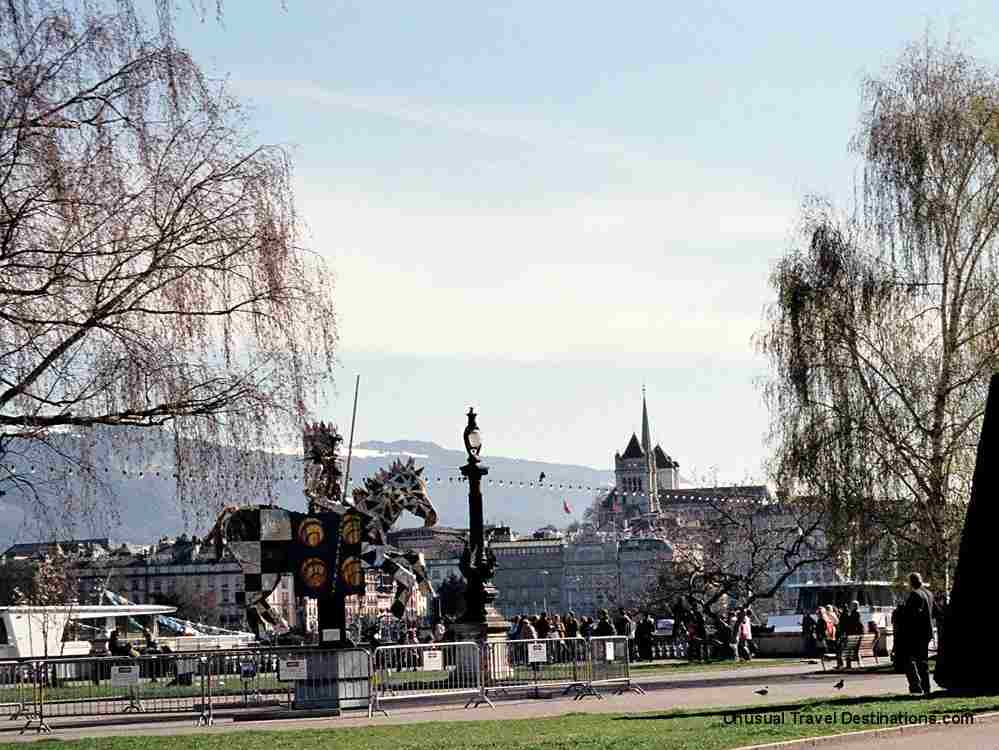
It is a sculpture commissioned by EPI (Établissments Public pour l’intégration), an organization that helps the less fortunate in our society to find work and provides help in all aspects of living. The Chevalier EPI de La Combe made his appearance in December 2009 as part of the international celebration of the handicapped. Unfortunately, I could not find out if it will be a permanent installation.
The Broken Chair
Did the Swiss become lazy …and leave a broken chair unmended? Not likely. The reason why this three-legged Broken Chair is standing on the Place des Nations, Geneva, right across the sprawling complex of the United Nations, has a very serious reason. The statistics of landmine victims are still staggering. Each year between 15,000 and 20,000 people – mostly innocent and defenseless civilians – tragically suffer the loss of limbs and lives.
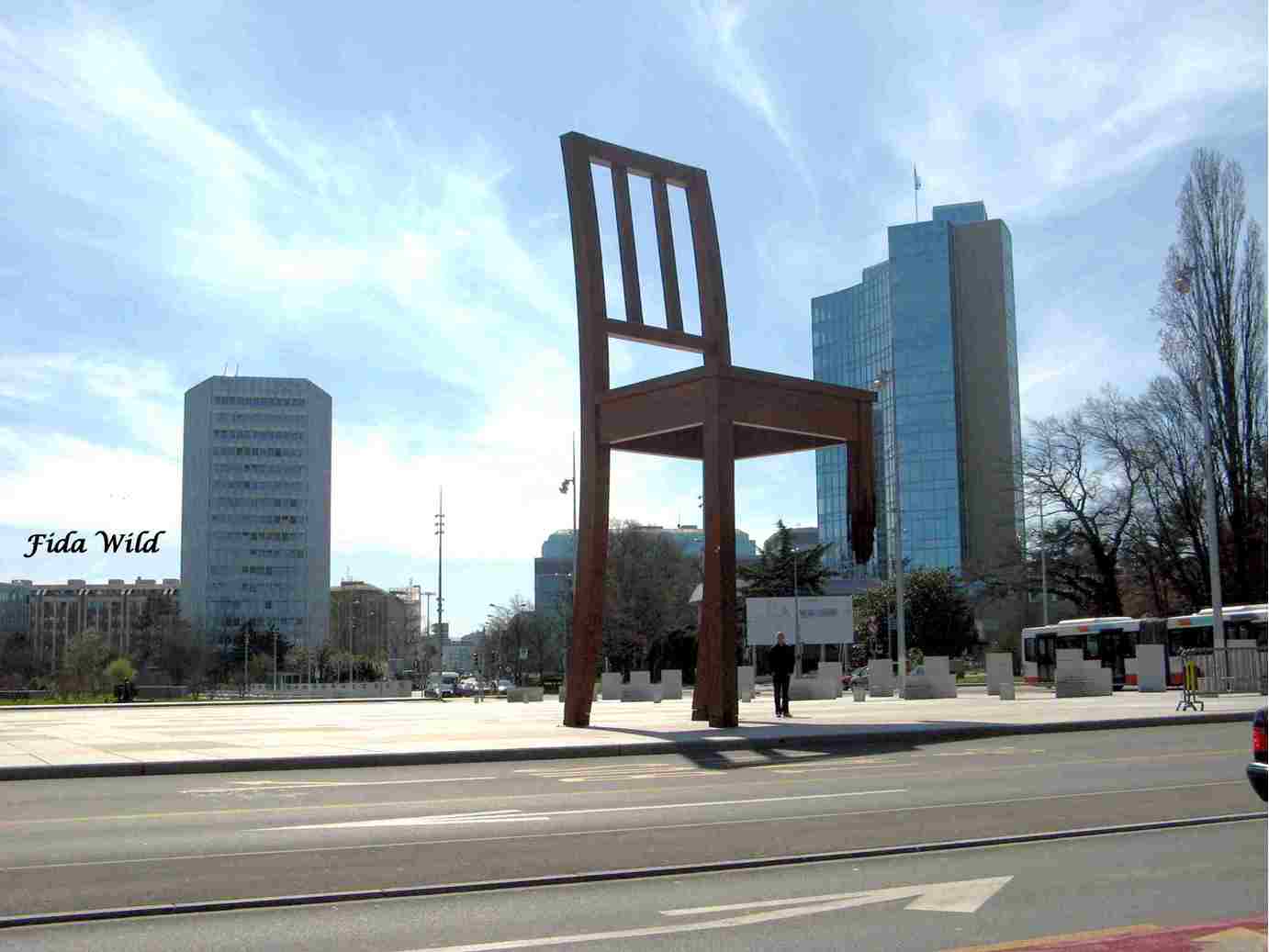
Paul Vermeulen, a former member of Medicines Sans Frontier knows first hand what it means to be a ‘statistic of landmines.’ When he co-founded Handicap International Suisse and became its Director, he was determined to give the cause a symbol that would grab the attention not only of politicians but also be a daily reminder to the officials at the European Headquarters of the United Nations as well as to the hordes of daily visitors to Geneva.
He commissioned Swiss Artist Daniel Berset to design a memorial that would symbolize the fragility of humans; hence, Berset chose wood for his Broken Chair, a material as fragile as bones.
The splintered leg of the monumental chair reminds us of the fractured limbs of the injuries caused by landmines, and yet, the chair stands firmly in place, much the same as victims of landmines do, that is, if they survive the horrific accident.

Initially the 5.5-ton heavy and 12 meters (39 ft) high installation was planned to stay at the Place des Nations for only three month, until The Mine Ban Treaty, also known also as Ottawa Treaty, would be signed in December of 1997. But then, not every country signed the treaty and it was decided to keep the chair in place as long as it was needed as a reminder.
The Place des Nations was little more than a dirt patch until 2005 when finally the busy intersection and main tram-line stop received a much-needed make over. For that reason, The Broken Chair had to be removed and stored.
The Broken Chair was reinstalled at the renovated Place des Nations in 2007, the same year when The Convention on Cluster Munitions was called to action, and The Broken Chair was adopted as its symbol as well. Although more and more countries sign both treaties, some still have not, amongst them the USA and Israel, who used them in the Iraq war and in the bombing of Lebanon respectively.
